#13th -18th century
Text
The Caravel
The caravel began as a fishing boat with Latin sails in Portugal in the 13th century. At the beginning of the 14th century, before the time of the great Portuguese discoveries, the same name was used for a two-masted, Latin-sailed merchant ship with forecastle and hut for Mediterranean and coastal voyages. After land links to India had been severed by Turkish occupations and the Mediterranean voyage had lost its importance, Portugal became the nation that intensively sought a southern sea route to India. Prince Henry, known as Henry the Navigator (1394 to 1460), was a far-sighted promoter of shipbuilding and shipping. He deserves credit not only for initiating the further development of the caravel, but also for founding a state-supported observatory and a navigation school at a very early stage.
From the two-masted caravels, the relatively slender three-masted Latin sail caravels (caravela latina) emerged, which were better suited for longer journeys and had exclusively Latin sails on all three masts. A typical feature, to which the name of the ship type is also attributed, was the Kraweel construction, in which the ship's planks butted together directly at their longitudinal seams, so that smooth surfaces were created on the outside and inside of the ship's side walls. The seams were caulked so that the ships took little water even in a swell. In addition, the smooth outer skin could be better protected against fouling and worm damage. Another feature of the caravel was the relatively high stern.

A caravela latina, by Stephen Biesty (x)
Under the influence of and in continuation of Roman traditions with divided square sails, the development of the three-masted square-rigged caravel (caravela redonda) took place during the 15th century, with square sails on the bowsprit, foremast and mainmast. Above the mainsail on the mainmast was the topsail. Because of their favourable steering characteristics, square-rigged caravels always had lateen sails on the mizzen mast. From the 14th to the 16th century, caravels were among the most seaworthy sailing ships, including four-masted caravels. Some consider this a forerunner of the galleons.

Reconstruction of a Caravel of Christopher Columbus. Drawing by Julio Guillen Y Tato (1897-1972), 1932 (x)
Vasco da Gama's ships were also caravels. Of the three ships with which Columbus sailed along Central America in 1492, the Pinta and the Nina were probably caravels, the Santa Maria was probably a Nao. He gave the speed in his diary as up to 15 Italian miles per hour, which is about 11 knots. So it was pretty fast, if you can call it that. The usual Portuguese caravels had a carrying capacity of 50 to 60 tonnes, and later a much higher capacity. Thus, the ships of the Magellan also included larger four-masted caravels.
Because of its advantages over Holland, the caravel construction method soon became the determining construction method for wooden ships throughout Europe. Thus, in 1460, the first "Karvielscheepen" were built in Holland in considerable sizes for 400 loads (800t) carrying capacity with a length of about 43 m and a width of 12 m. In the first half of the 16th century, Lübeck and Gdansk took a leading position in the construction of large Caravel ships.
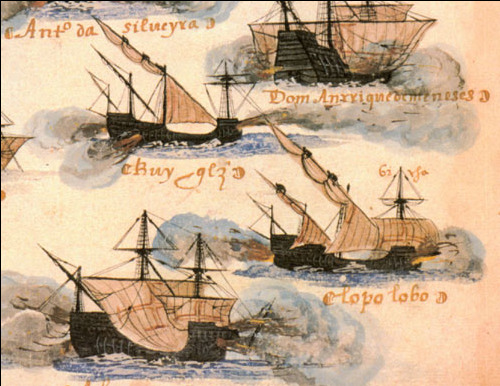
Square-rigged caravels (here caravela armada) fighting and escorting naos in India Armadas, in: Livro de Lisuarte de Abreu, c. 1565 (x)
A little later, however, the carrack and later the galleons took over and the caravels became less and less important. But not completely, because as a caravela armada - an armed caravel - it remained in service with the Portuguese until the 18th century and was nothing other than a larger cross sail caravel. The Portuguese used it as an escort on the Brazil and India routes as well as to protect shipping with the Atlantic islands, it was used to monitor the Straits of Gibraltar, but also for coastal protection and anti piracy.
78 notes
·
View notes
Text







Women in History Month (insp) | Week 2: Royal Mothers
#historyedit#perioddramaedit#women in history#women in history month challenge#blanche of castile#french history#turhan hatice sultan#ottoman history#ririkumutima#burundese history#african history#louise of prussia#german history#çiçek hatun#bathsheba#jewish history#queen jeongsun#korean history#13th century#17th century#19th century#15th century#10th century bc#18th century#mine#my edits
120 notes
·
View notes
Text
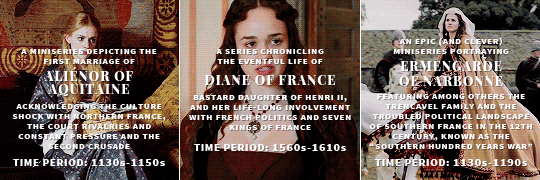
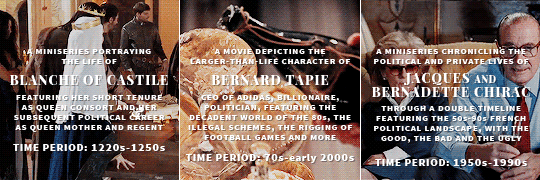
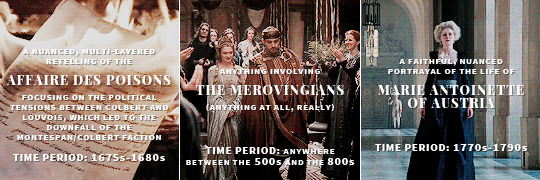
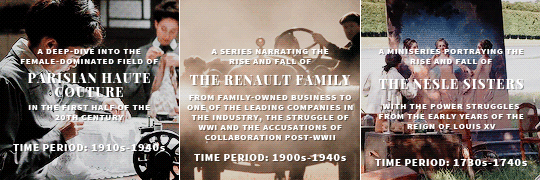





(some) of the period dramas i'd love to see about french history
#historyedit#perioddramaedit#14th century#13th century#12th century#9th century#6th century#19th century#20th century#15th century#16th century#17th century#18th century#mine#*
384 notes
·
View notes
Photo
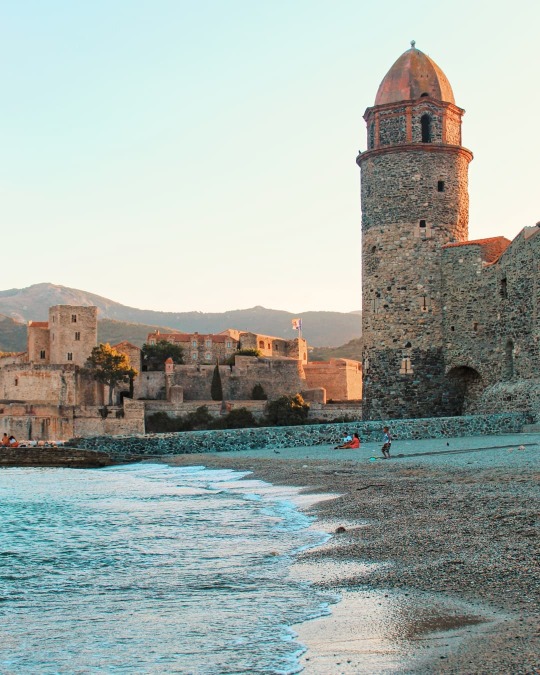
Cotlliure, Northern Catalonia.
The tower was originally built in the Middle Ages as part of the defensive city walls. It was later turned into a lighthouse, and since the 18th century it serves as the bell tower for the 17th-century church of Santa Maria dels Àngels.
Behind, there’s the Royal Castle. The first documented reference to this castle dates back to the year 673, but it was completely rebuilt between 1242 and 1280. It was later partially rebuilt in the 17th century following the orders of the famous military engineer Vauban, who adapted the fortification to the needs of 17th century war.
Photo by isaura_viver on Instagram.
#cotlliure#catalunya nord#fotografia#història#travel photography#beach#sea#mediterranean#castle#medieval#tower#bell tower#lighthouse#17th century#18th century#13th century#travel#europe#pays catalan#history
88 notes
·
View notes
Text

13th-century Château de Sautré, rebuilt in the 18th-century, Anjou region of central France
French vintage postcard, mailed in 1907
#13th-century#historic#chteau#photo#briefkaart#vintage#anjou#region#château de sautré#rebuilt#th#sepia#photography#the 18th-century#carte postale#central#postcard#mailed#postkarte#france#postal#tarjeta#ansichtskarte#french#old#ephemera#de#postkaart#century#1907
5 notes
·
View notes
Text

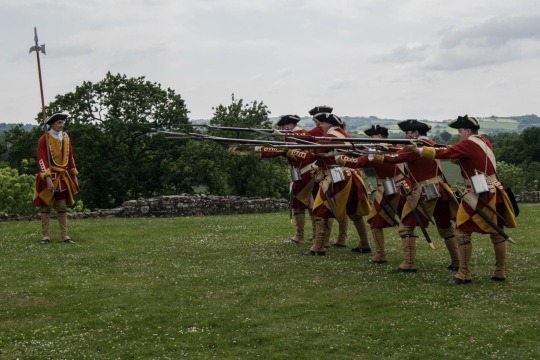
Pultney’s 13th Regiment of Foot showing the “present” and “thrust your bayonets” motions of arms.
#history#british army#18th century#military history#redcoat#redcoats#13th foot#battle of culloden#culloden#1745
28 notes
·
View notes
Link
for those who had forget
this is the history of music series
this is part 2. I started with music from acient times
lastly I was in the 19th century,
the era of impresionism
today I start with the music of the lost generation.
#acient times#medieval#12th century#13th century#14th century#15th century#16th century#17th century#18th Century#19th Century#Regency#victorian era#impressionism#History of music 2
4 notes
·
View notes
Text
From around equality in the thirteenth and fourteenth centuries, the gulf between the average pay of men and women had fluctuated dramatically before falling to a steady rate of half-pay for women, now with support from most political economists; with the honourable exception of John Stuart Mill.
"Normal Women: 900 Years of Making History" - Philippa Gregory
#book quote#normal women#philippa gregory#nonfiction#gender equality#13th century#14th century#gender pay gap#pay gap#fluctuation#free market#political economy#john stuart mill#18th century
0 notes
Text
The mean wages of women in England from 1260 to 1850 shows the equality of pay between men and women until the late 14th century, and then the widening gap as legislation held down women's wages but male workers improved their pay.

"Normal Women: 900 Years of Making History" - Philippa Gregory
#book quotes#normal women#philippa gregory#nonfiction#england#13th century#14th century#15th century#16th century#17th century#18th century#19th century#graph#gender pay gap#equality#wages#pay gap
0 notes
Text
Commonly Used Tags
General Curation:
#pretty
#handsome
#old (Anything from the 1920s back)
#pretty and old
#handsome and old
#old-ish (Anything from the 1930s-1980s)
#pretty and old-ish
#handsome and old-ish
#new(Anything from the 1990s-Present, generally
#lolita fashion)
#pretty and new
#handsome and new
Things I Love:
#pretty dress
#pretty dress illustrated
#princely
#creatures
#I love this so much
*Generally tagged by century, Post-1900s tagged by decade. Periods in tags.
#text#medieval#renaissance#10th century#11th century#12th century#13th century#14th century#15th century#16th century#17th century#18th century#19th century#1900s#1910s#1920s#1930s#1940s#1950s#1960s#1970s#1980s
0 notes
Note
A big thanks to you and your team for making Pentiment, it's an amazing game and it'll be with me for a long time I think, especially the personal and emotional character writing.
I'm curious about what was the inspiration behind, and creative motivation for including, the motif of the labyrinth. The church's painting of the Virgin Mary with the labyrinth seems striking in particular, especially because I don't remember ever coming across a strong association with labyrinths in Christian imagery.
Thank you. I'm glad it was so impactful.
Labyrinths have a long association with Christianity going back to the 4th century, when one was placed in a cathedral in Chlef (now in Algeria). This is known as the St. Reparata or St. Reparatus Labyrinth.
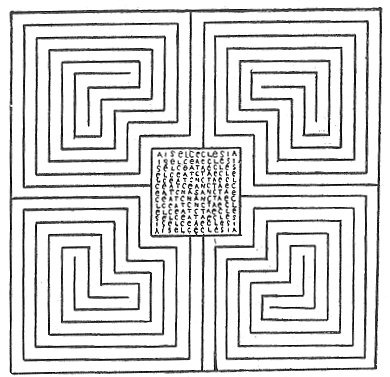
The Chartres Labyrinth was built around 1200.
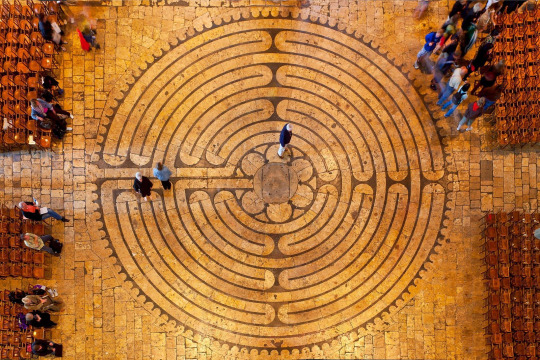
Christian labyrinths are meant to be walked while contemplating. The path twists and turns, but there is only one way to go. They also all clearly take inspiration from labyrinths of the classical world even if their purpose and origins are effectively lost to those who see them.
As Beatrice says to Andreas (paraphrased), the foundations of our memories become buried and invisible. And she is paraphrasing and abbreviating Plato speaking to Solon in Timaeus,
whatever happened either in your country or in ours, or in any other region of which we are informed-if there were any actions noble or great or in any other way remarkable, they have all been written down by us of old, and are preserved in our temples. Whereas just when you and other nations are beginning to be provided with letters and the other requisites of civilized life, after the usual interval, the stream from heaven, like a pestilence, comes pouring down, and leaves only those of you who are destitute of letters and education; and so you have to begin all over again like children, and know nothing of what happened in ancient times, either among us or among yourselves. As for those genealogies of yours which you just now recounted to us, Solon, they are no better than the tales of children. In the first place you remember a single deluge only, but there were many previous ones;
I also wanted the association with the labyrinth from The Name of the Rose, which in turn was inspired by the Reims Labyrinth.
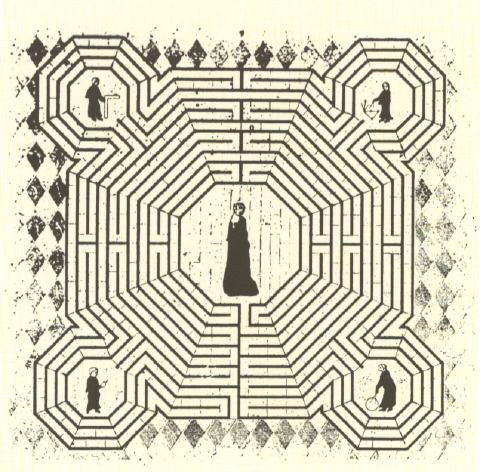
The Reims Labyrinth was constructed in the late 13th century but was destroyed in the 18th century by superstitious priests. It was through the discovery of drawings that modern scholars were able to recreate and project the path of the labyrinth onto the cathedral floor.

The cover of the 1st Italian edition (and therefore, first edition overall) of Il Nome della Rosa prominently incorporated the drawing of the Reims Labyrinth.

Note the map of the Aedificium:

The final lines of The Name of the Rose are:
Stat rosa pristina nomine, nomina nuda tenemus.
The original rose remains only in name, we hold those names stripped.
This refers to a specific object in the story, but more broadly symbolizes historical records, art objects, and other artifacts lost to time. The Reims Labyrinth remains only in drawings, stories, and light projected on the ground where it once stood; the labyrinth itself was destroyed.
Nomen est; res non est. - The name exists; the thing does not.
As a side note, France uses the Reims Labyrinth as its symbol for historical monuments - an important reminder of how fragile their existence can be.

1K notes
·
View notes
Text
it's so crazy to me that there's so little good horror movies set in a medieval or renaissance setting. there's like a million 18th/19th century films about ghosts but nothing about weird legends from the 13th century? have you seen the bestiary these eras had???
#i want films that feels like the Name of the Rose/ the Seventh Seal/ It's Hard to be a God but like....horror#we could have it all... cool architecture. religious imagery. fucked up monsters from illuminated manuscripts....#horror#horror films
425 notes
·
View notes
Text

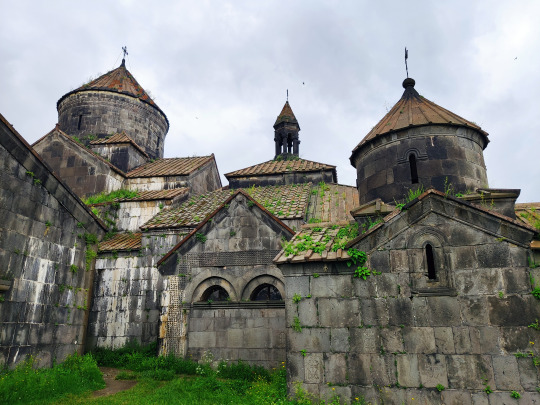
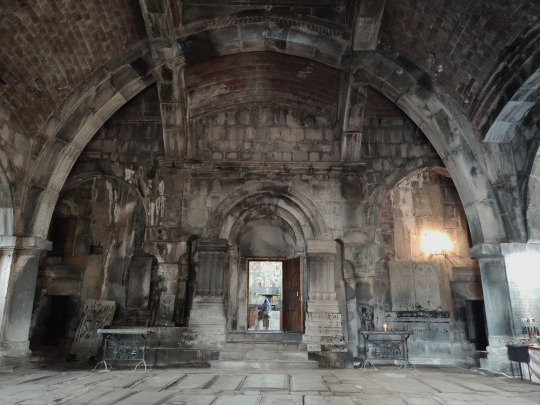

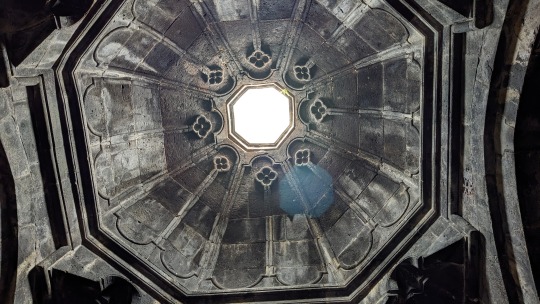

haghpat monastery in haghpat, armenia. the initial building was completed in 991 by medieval armenian king smbat II, and other structures were added later until the 13th century. its location was deliberately chosen to both be inconspicuous and overlook the nearby debed river.
this monastery was one of the locations featured in the 1969 film the color of pomegranates. the film follows the life of 18th century armenian poet sayat-nova, who at one point served in haghpat as a monk. he was also murdered there in 1795.
#armenia#architecture#interior#worship#christian#my posts#i always really liked how armenian churches are a happy medium between syriac and byzantine churches#almost as if the armenia was located in a geographic area where those two influences would converge 🤯
230 notes
·
View notes
Text
The Orlop
Large merchant ships with a fixed deck are documented as early as the 13th century. This deck was called an averlop or overloop. In the course of the 17th and 18th centuries, the height of the deck in relation to the waterline changed. Until then, it was not only the lowest deck in general, but also the lowest gun deck. Below this began the so-called space, which could be divided by planking or could also have a light and therefore watertight deck. The overlop could be covered by a canopy. It is not clear from the sources whether this deck was given its own name. The term ‘Verdeck’ also generally refers to a deck and Dutch sources usually only contain descriptive lists of decks. In German usage in the 17th century, there is also no evidence of a distinction between decks by name. In Hamburg in 1685, all decks were described as overlop (‘overflow’). In Röding's dictionary of 1798, overlop is translated as overflow and generally as deck. In contrast, the English orlop is translated in the same work as Kuhbrücke ( cow bridge - where the cattle were housed) under the lowest deck.

Orlop deck of a ship of the line (in red), 1728, in: A Ship of War, Cyclopaedia, 1728, Vol 2
The orlop deck was used as an ideal storage area and at the same time as a recreation room for some of the ship's crew. As the deck did not have to be cleared or remodelled during combat operations, cabins and rooms located here were permanent and could even be locked. The purser could therefore store his valuable or dangerous items (small arms) here, and the surgeon his medical items (medicines, instruments), so that they were protected from unauthorised access. As the deck was below the waterline, it was one of the safest places on board during a battle. For this reason, the ship's surgeon often had his workshop down there, as he could do his work unhindered by the fighting and the wounded were brought to him on the orlop deck.
#naval history#naval artifacts#orlop deck#13th -19th century#age of sail#medieval seafaring#age of discovery#age of steam#just a small overview
73 notes
·
View notes
Text
As used, the term ‘precolonial’ Africa and the distortions it represents cannot illuminate our understanding of Africa and its history.
More importantly, it is wrong to think of colonialism as a non-African phenomenon that was only brought in from elsewhere and imposed on the continent. Africa has given rise to a rich tapestry of diverse colonialisms originating in different parts of the continent. How are we to understand them? For example, if ‘precolonial Morocco’ refers to the time before France colonised Morocco, it must deny that the 800-year Moorish colonisation of the Iberian Peninsula, much of present-day France and much of North Africa was a colonialism. For, if it were, then ‘colonial Morocco’ must predate ‘precolonial Morocco’. I do not know how any of this helps us understand the history of Morocco. Similarly, a ‘precolonial’ Egypt that refers to Egypt before modern European imperialism would also deny Mohammed Ali’s colonial adventures at the head of Egypt in southern Europe and Asia Minor. Was ancient Egypt part of some precolonial formation? That strains credulity. To conceive of the history of Africa and Africans in terms only, or primarily, of their relation to modern European empires disappears the history of Africans as colonisers of realms beyond the continent’s land borders, especially in Europe and Asia.
It is bad enough that the term distorts the history of African states’ involvement in overseas provinces. It is worse that it misdescribes the evolution of different African polities over time. The deployment of ‘precolonial Africa’ is undergirded by a few implausible assumptions. We assume either that there were no previous forms of colonialism in the continent, or that they do not matter. We talk as if colonialism was brought to Africa by Europe, after the 1884-85 Berlin West Africa Conference. But it takes only a pause to discover that this is false.
African history is replete with accounts of empires and kingdoms. By their nature, empires incorporate elements of colonisation in them. If this be granted, Africa must have had its fair share of colonisers and colonialists in its history. When, according to the mythohistory (the founding myth of the empire) of Mali, Sundiata gathered different nations, cultures, political leaders and others to form the empire in the mid-13th century, he did not first seek the consent of his subjects. It was in the aftermath of their being subdued by his superior force that he did what Jean-Jacques Rousseau in the 18th century insisted all rulers should do if their rule is to escape repeated challenges and last for an appreciable length of time: turn might into right. Ethiopia, another veritable empire, is a multinational, multilingual, multicultural state whose members were not willing parties to their original incorporation into the polity. Whether you think of the Oromo or the Somali, many of their successor states within Ethiopia are, as I write this, still conducting anticolonial struggles against the Ethiopian state.
124 notes
·
View notes